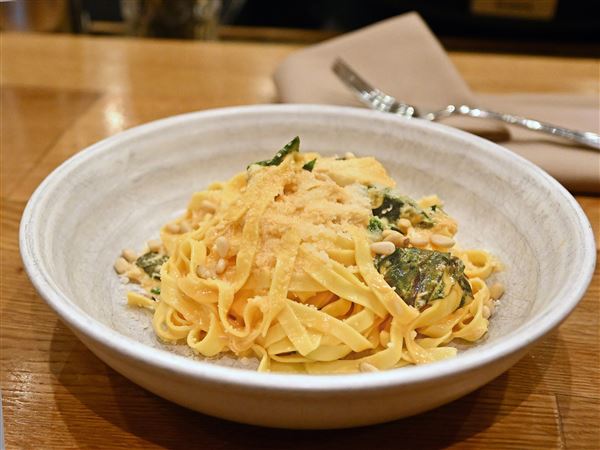Q. We had trio of black gum trees that were at least 50 feet tall cut down in the spring. Now we have trees sprouting up all over the lawn, probably from the old roots. We have been cutting them down with the lawn mower and spraying them with Roundup, but they just keep sprouting up. There are at least 30 new trees coming up in the lawn now. How can we stop this?
A. Black gum (Nyssa sylvatica) often produces suckers from the roots when the main tree is cut down or even badly damaged in a storm. Large trees have large root systems with tremendous carbohydrate reserves that are providing the energy for the sprouts to grow.
The reason for your spotty success with herbicide applications may be a matter of timing as well as the herbicide you are using and the way you are using it. If you mow the sprouts, then apply diluted Roundup (glyphosate), it is not likely to work well. Systemic herbicides are more effective when there is sufficient foliage to absorb the herbicide.
Perennial and woody species are best controlled with late summer and fall herbicide applications. At that time of the year, carbohydrates produced via photosynthesis are moving to the root system for storage, so the tree has the reserve to leaf out and bloom the following spring. Herbicide applications at that time of year are taken down to the root system more easily, increasing your chances for good control. Spring applications may have little effect because those carbohydrates are moving up through the tree ("the sap is rising"), and the herbicides are not moved to the roots for a more complete kill.
It is too late for this now, but one way to reduce re-sprouts from suckering tree species is to cut the tree down in late summer or early fall, then treat the freshly cut stump with a brush-killing herbicide such as Ortho Max Poison Ivy and Tough Brush Killer (triclopyr). In such a case, the undiluted concentrate is applied to the stump with a paintbrush as soon as possible after the tree is cut down. The application should be made within five minutes or so because the stump will begin to callous over and will not absorb the herbicide efficiently. The tree's vascular tissue absorbs and moves the herbicide down to the roots for more complete control.
Although you would have some re-sprouts, there would not be as many as you have now. Because triclopyr is a selective herbicide that will not damage grass when used according to label directions, it will be easier on your lawn than glyphosate. Glyphosate can also be used undiluted for cut stump treatments.
The same treatment also works on sprouts. It will be a bit laborious because you have so many, but it is still probably the best way to go. Rather than using the mower, cut them with hand pruners or limb loppers for a cleaner cut. Be sure to leave a little bit of stump so you can immediately paint it with undiluted triclopyr, including the sides. It is getting late in the season, but this approach should still work. Read and follow label directions regarding appropriate gloves and clothing to wear when making the application.
More sprouts are likely to grow next season that will need treatment. Remember that spring and early summer applications are not likely to work well, if at all. If you can stand to let them grow until midsummer, you can treat the foliage with a diluted solution of triclopyr (according to label directions). For this application to work well, the sprouts need as much foliage as possible to absorb the herbicide. You may also need to repeat the cut stump treatment in late August through September.
The latter treatment works well for hard-to-control species such as tree-of-Heaven (Ailanthus altissima), sumac (Rhus spp.), poison ivy (Toxicodendron radicans), wild brambles (Rubus spp.), and multiflora rose (Rosa multiflora).
Send questions to Sandy Feather by e-mail at slf9@psu.edu or by regular mail c/o Penn State Extension, 400 N. Lexington Ave., Pittsburgh 15208.
First Published: November 2, 2013, 12:44 a.m.














